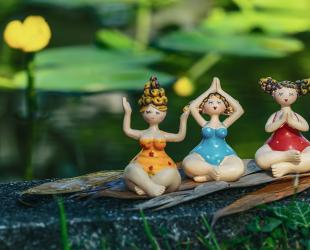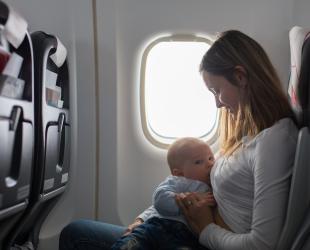Tips to help you feed comfortably and meet your baby's needs in the heat.

Most areas of Australia experience heat in summer and it can be exhausting for everyone. Mums and babies need special attention in extremes of temperature to make sure they are comfortable and well hydrated.
When everyone is hot, often the last thing we want is to sit close to someone else! It's not surprising that babies may be fretful and unwilling to breastfeed at these times.
Feeling more comfortable when feeding in the heat
-
If skin contact is uncomfortable for both you and your baby, place a muslin wrap, pillowcase or cloth nappy between you.
-
Place a cool, damp face-washer in the crook of your arm while feeding.
-
Lying down to feed may be more comfortable for both of you. Only baby's mouth and your breast need be in contact.
-
If your baby's skin feels hot to touch, sponge them frequently with lukewarm (body heat) water. An alternative is bathing often. You only need to use plain water as soap can remove the natural oils from baby's skin.
-
A fine mist spray water bottle can be used for older babies.
To keep your fluids up, have a glass of water at each breastfeed. Some mothers find that water bottles placed throughout the house remind them to drink enough so that they are not thirsty.
Commonly asked questions about babies in the heat
In hot weather, you might worry that your breastfed baby may not be getting enough to drink. You might wonder if you should give them boiled water or fruit juice 'just in case'.
The NHMRC Infant Feeding Guidelines state that exclusively breastfed infants do not require additional fluids up to 6 months of age. Giving water to a young baby can cause severe health problems, like water intoxication, because their kidneys are not fully developed.
If your baby is breastfed whenever they need, they won't need extra fluids. They might just breastfeed more frequently but for shorter periods, just as you drink more often when it's hot.
Breastmilk is perfect for your baby in the heat.
-
It contains a perfectly balanced ratio of food and water to meet all your baby's needs.
-
It is a living fluid, always changing to suit your baby and even in response to the weather!
-
The milk at the beginning of a feed tends to quench your baby's thirst.
-
As the feed goes on, the fat content of your milk gradually increases as your breast softens. This later milk has a creamier appearance and satisfies your baby's hunger.
If you have an older baby or toddler who is no longer exclusively breastfed, you can encourage them to drink water between breastfeeds. You can also offer extra 'snack' breastfeeds to keep them well hydrated. Another cool idea for toddlers is to freeze fruit pieces, such as orange quarters, peeled banana or slices of pineapple - cooling and fun! You can even make expressed milk 'ice blocks'.
You can check at any time that your fully-breastfed baby is getting enough breastmilk.
Remember that in very hot weather the urine on a cloth nappy may have dried so you might need to smell the nappy to tell if it has been wet. Disposable nappies should feel heavy to hold after use, unless you've changed them very frequently.
When it’s very hot, you may need to wake your baby for extra feeds to make sure they get enough fluids. Fewer wet nappies, dark-coloured urine that smells of ammonia and an unhappy baby who is hot and dry to the touch are signs that your baby needs more fluids. If baby won’t feed well, is lethargic, with dry skin and mouth, dull sunken eyes and a sunken fontanelle, seek medical treatment straight away.
Your baby may seem eager to feed, then pull away after a short time and refuse to go back to the breast. Sometimes when it's very hot, babies only want enough to satisfy their thirst. This may be your baby's way of controlling how much they drink.
Some babies refuse to feed during the hottest part of the day. They cope by having longer feeds in the cool of the evening or wake more often to feed during the night or early morning. Our article on breast refusal has ideas for babies who are refusing feeds even after trying to cool them down. If you need extra help to deal with your immediate situation, contact one of our breastfeeding counsellors.
Take care when travelling in hot weather
- Some babies become sleepy when travelling in hot weather. You may need to stop and wake your baby for feeds.
-
Feeding and letting baby stretch out on a picnic rug in the shade can be cooling.
-
The effect of car air conditioners can cause some dehydration. Extra breastfeeds may be necessary on long trips, even if you are cool.
-
Prams that are enclosed are airless and can get very hot. An open-weave bassinette, layback stroller, baby hammock, or portable cot is probably cooler for your baby to rest in. If in a pram or stroller, straps need to be done up and baby monitored at all times.
In extreme weather conditions
Sometimes families may find themselves in extreme or emergency conditions with babies and young children and may need to evacuate. In such cases you will need to be prepared in order to care for your children.
Fully breastfed babies are very portable. If you are feeding expressed breastmilk to your baby or if your baby is having formula, you will need more in your emergency feeding kit. You may be without power or clean water, so will need to be extra careful about preparing feeds.
© Australian Breastfeeding Association April 2022


